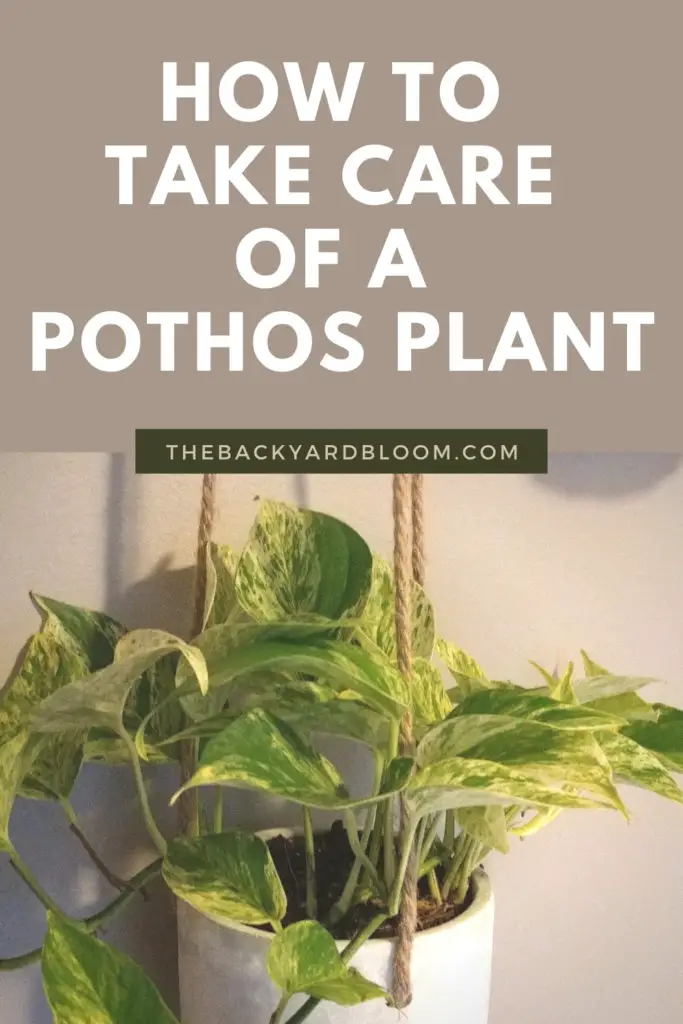Please note that this post may contain affiliate links. You can read my full affiliate disclosure at the bottom of the page.
Pothos (Epipremnum aureum or Devil’s Ivy) plants are a popular house plant that is easy to take care of. They come in quite a few varieties, giving you the option of solid green leaves or various versions of variegated leaves.
I have always loved my pothos plant. They are one of the most tolerant and easy to grow plants I’ve ever encountered. It has been the plant to help me get my green thumb.
If you are looking for a house plant that can take some abuse and neglect from time to time then Pothos is what you are looking for.
They are a house plant that doesn’t require direct sunlight and can grow quite well if all you have are north-facing windows or lower light rooms. Watering can be neglected from time to time and they will bounce right back.
So if you always thought you had a brown thumb, maybe give a pothos plant a try. Read on for information on how to take care of a pothos plant.
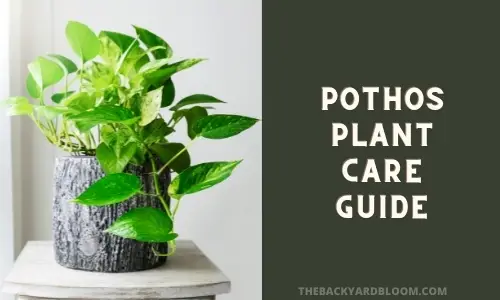
Origins
Pothos plants are a tropical plant found in the forest on Moorea in French Polynesia.
These plants can be invasive in tropical climates. It has become an issue in Sri Lanka and has also been listed as invasive in the State of Florida by the USDA.
Can Pothos Live Outside?
It is a vine plant that in its natural habitat climbs tree trunks and runs along the ground. In its natural conditions, its vines can grow up to 40 feet long. However growing in homes its vines usually grow only up to 8 feet long, although with really good growing conditions some house plant enthusiasts have gotten longer vines.
In the tropical forest, pothos plants are not variegated. Variegation of pothos appears to have begun in the 19th century due to hand selection among plant hunters. Variegated varieties are among the most popular types of pothos for house plant enthusiasts.
Other Names for Pothos
There are many other names that pothos plants are called. Here are some of the more common names that people may call them:
- Devil’s Ivy
- Devil’s Vine
- Solomon Islands Ivy
- Taro Vine
- Money Plant
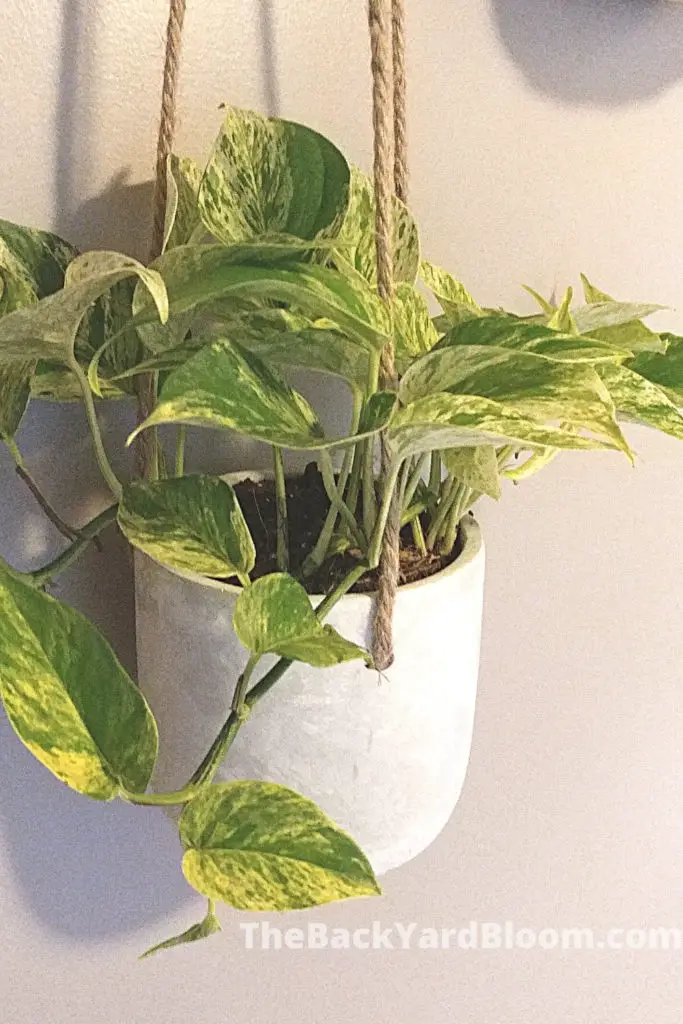
Common Varieties of Pothos
There are quite a few different types of pothos plants available.
Some of the popular varieties are:
- Marble Queen Pothos
- Golden Pothos
- N’Joy Pothos
- Pearls and Jade Pothos
- Silver Satin Pothos
- Neon Pothos
- Jade Pothos
- Global Green Pothos
- Cebu Blue Pothos
- Baltic Blue Pothos
- Manjula Pothos
We have some of the variegated varieties listed in our post on House Plants With Variegated Leaves That Are Easy To Take Care Of that you can see the different variegation types of pothos, such as the Pearls and Jade.
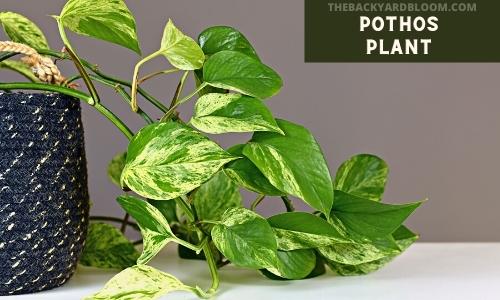
How To Water a Pothos Plant
It is best with these plants to make sure to let the soil of your Pothos dry out between watering. If this is not done and the plant is left sitting in constantly soggy soil root rot can occur. Root rot is the way most people end up losing pothos plants.
You will probably find that watering will also depend on light levels. Pothos plants that are in bright light tend to need water more frequently than those in lower light areas.
One of the best ways to determine if your plant is indeed in need of water is to wait for the leaves to slightly droop before you water the plant.
But make sure to water the plant at that time, if you go longer the leaves can start to shrivel and die off. If that does happen though there is no need to panic, just water your plant and remove the dead leaves. It should spring back without issue.
Another way to check the soil moisture levels is to use a moisture meter. This way you don’t have to question if it really feels dry.
Pothos Light Requirements
Pothos is a plant that doesn’t like direct sunlight. When they are placed in direct sunlight it can result in burnt leaves.
They can do well in bright indirect light and can even grow in low light.
Some people find that when they grow variegated pothos varieties in low light that those plants lose some of the variegation. If this happens just move the plant to an area where there is more light and the variegation should return back to normal.
Related Reading: Why Is My Marble Queen Pothos Losing Variegation?
If you find that your pothos has pale leaves then it might be getting too much light.
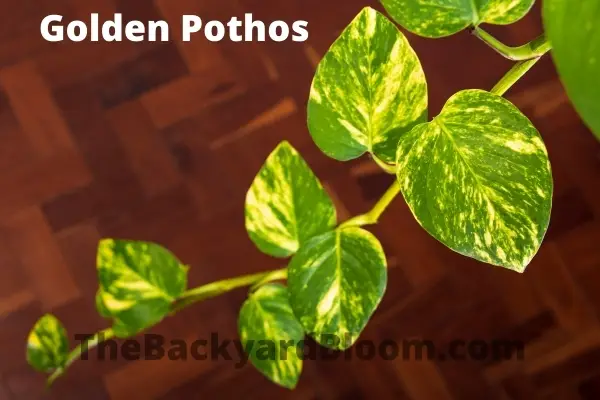
What Soil to Use with Pothos
These plants are not too picky about the soil that they are planted in.
A regular potting mix will work just fine. If you worry about drainage, then add some perlite to the mix. (What is perlite used for?)
Soggy soil can lead to root rot due to the roots sitting in the wet soil all the time.
How To Repot Pothos Plants
Most of the time pothos plants need to be repotted every two years. If you find your plant growing fast it might need to be repotted every year instead of two.
If you start to see the leaves getting droopy even though you water it enough, then it might be time to repot your plant because it could be root bound. When pothos plants get root bound it causes issues with them being able to take up enough water and nutrients.
Pick a new pot that is slightly bigger than the old one, make sure it is able to drain well.
Don’t go up too far up in pot size. You want to pick a container that is a few inches bigger than the previous one.
After you have put your pothos in its new pot, water it well.
Pothos Propagation
The most popular way to propagate a pothos plant is to use stem cuttings and propagate the pothos cutting in water.
Just cut off a leaf with its stem attached and place it in some water and it will grow roots.
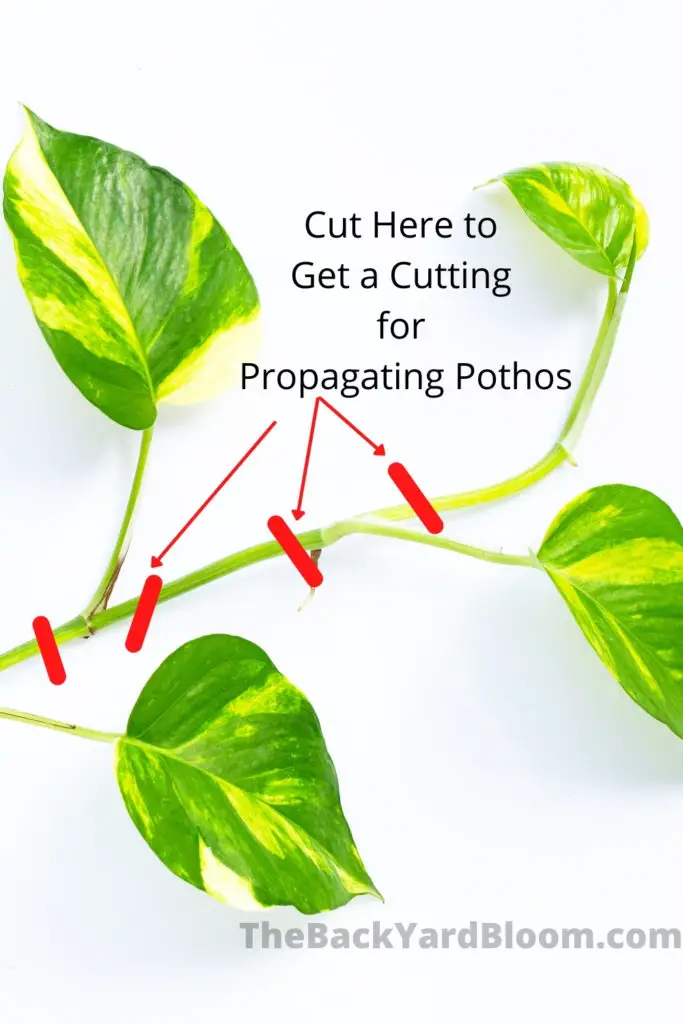
After they have grown roots put them in a pot with soil so they can start getting some nutrients to continue their growth.
Pothos Plant Toxicity
Pothos plants are toxic to both dogs and cats.
If you do have pets it is best to let your pothos grow up high out of reach of your animals.
This plant can also be mildly toxic to humans as well because of the calcium oxalate that is in the plant. So don’t eat it if you have one of these. Also don’t rub it all over your skin as it can cause skin irritation if there is excessive contact between the plant and your skin.
Fertilizing Pothos Plants
Fertilizing for pothos does not need to be done often. You only need to fertilize it about once or twice a year.
Liquid fertilizer is best to use and only use half of what is recommended on the fertilizer.
Temperature
Pothos prefer to be kept in temperatures above 50 degrees Fahrenheit.
They do not tolerate cold well.
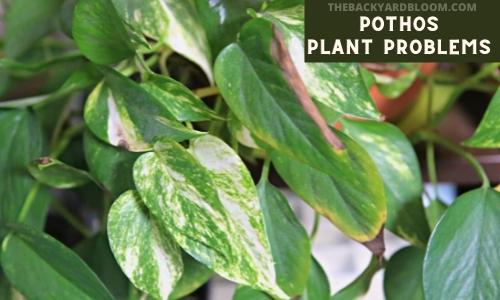
Common Problems With Pothos Plants
Brown Spots on Leaves
Brown spots on the leaves of a pothos plant can indicate that root rot is occurring. Make sure that the soil is drying out between watering and that the pot is draining well.
Brown spots could also be caused by burning from sunlight, see our article Can a Pothos Get Sunburn? if you have burned leaves on your plant.
Brown Edges on Pothos Leaves
Brown edges on the leaves can indicate that the plant is going too long between waterings.
Pothos Leaves Turning Yellow
Yellowing leaves can be a sign of overwatering. Check the soil moisture levels and see if there could be an issue with the pot draining well.
Root Rot
Root rot is the number one way people lose pothos plants.
If left sitting in soggy soil root rot can become an issue.
Always make sure to let the soil dry out between watering, have well-draining soil, and have your plant in a container that allows for drainage.
Pests
Pothos plants are pretty hardy when it comes to the common house plant pests.
Mealybugs however can be an issue on pothos plants. These are small white bugs that look kind of fluffy and can decimate plants if they are able to multiply. The best way to combat mealybugs is to use insecticidal soap or neem oil.
Another way that you can try to control these is to use a Qtip soaked in rubbing alcohol to take them off the plant. But I have never been able to stay ahead of an infestation by just using this method.
Related Reading:
Are Pearls and Jade Pothos Slow Growing Plants?
Is The N’Joy Pothos Slow Growing?
House Plants With Variegated Leaves That Are Easy To Take Care Of
Indoor Plants That Don’t Need Sunshine and Are Easy To Care For
Frequently Asked Questions About Pothos Plants
According to a study done by NASA pothos remove benzene, formaldehyde, and trichloroethylene from the air.
The last time a pothos plant was observed to flower on its own was in 1964
When variegated pothos plants don’t get enough light they will lose their variegation. Just move the plant to a brighter location that is not in direct sunlight and the variegation should return to the leaves.
Pothos do not require misting. While they are a tropical plant, they are a very hardy plant that doesn’t seem to care too much about humidity levels.
Pothos are said to be able to live for up to 10 years. However, personally, I think this is an underestimate. I have one that I inherited from my grandmother after she passed and it is at least 15 years old now and still thriving.
This is what’s known as sweating (yes your plants can sweat). When your pothos plant gets overwatered the plant’s water glands on the tip of its leaves drip water. This will continue until the plant doesn’t have excess water in the soil that it needs to push out. To get the dripping to stop just cut back on the amount of water you are giving to your pothos and let the soil dry out between waterings.
For more details see our article: Why Is My Pothos Dripping Water?
If you cut your pothos above a node, new growth will grow from the node of the vine. Cutting back your pothos encourages the plant to grow bushier. It is best to cut your plant during the growing season and not during the winter.
Pin This for Later:
References:
- A Review of Epipremnum (Araceae) in cultivation – [Aroideana 27, 199_205]
- ASPCA
- Missouri Botanical Garden
- Interior Landscape Plants for Indoor Air Pollution Abatement (NASA Clean Air Study)
